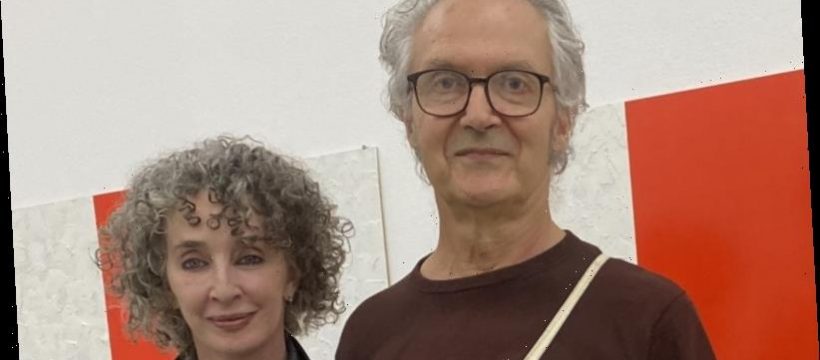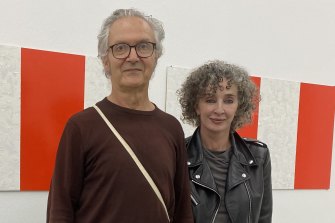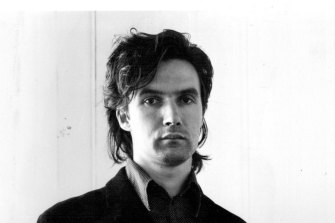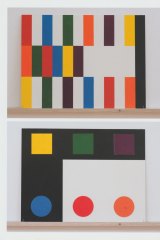The influential Australian abstract artist and leading exponent of radical modernism, John Nixon, has died at the age of 70.
Nixon died at his home in Melbourne during the early hours of Tuesday morning after a year-long struggle with leukemia.
In tribute, Anna Schwartz Gallery announced Nixon's solo exhibition, Groups + Pairs 2016 – 2020, installed before the onset of COVID-19, would remain on public display until the end of 2020.
Nicholas Chambers, the Art Gallery of NSW's senior curator of modern and contemporary international art, said Nixon's contribution to contemporary art in Australia was immense. Nixon's work is held in the collections of the Museum of Contemporary Art, National Gallery of Australia and other state galleries as well as public collections in Denmark, France, Germany, Korea, New Zealand, Poland, Switzerland, and the United States.
Artist John Nixon and gallerist Anna Schwartz earlier this year.
"Over the course of more than half a century, he forged a practice marked by its independence, experimentation, passion, and humility," Mr Chambers said.
"John was represented in every major collection in the country, and several in Europe, but he never rested on his laurels.
"As his last and current show in Melbourne attests, he was always exploring, brimming with ideas, and giving platforms to younger artists. He was a friend, supporter, and mentor to so many in Australia’s arts community. It is a profound loss."
Nixon studied at the Preston Institute of Technology in 1968, then the National Gallery School, and was first exhibited at the legendary Melbourne avant-garde gallery Pinacotheca in 1973.
Later that decade Nixon established the gallery Art Projects in Melbourne with then-wife, Jenny Watson, one of a number of exhibition spaces and publishing ventures that he hoped would provide an outlet for the distribution and discussion of art ideas.
John Nixon in 1979,Credit:Grant Blackman
John Nixon
These projects were instrumental in offering publishing platforms for Nixon's own works as well as contemporaries including Tony Clark, Robert Owen, Peter Tyndall, Mike Parr and Imants Tillers.
Gallerist and friend Anna Schwartz said Nixon's support of artists was one of his great qualities and he was always excited to collaborate with others on projects.
Nixon's minimalist, abstract aesthetic was influenced by the Russian avant-garde artist and art theorist Kazimir Malevich.
Ms Schwartz said Nixon was prolific in output and his practice ranged across radical modernism, abstraction, minimalism, constructivism, non-objective art, the monochrome and the readymade.
His work was all-encompassing and included painting, collage, print-making, drawing, photography, film, dance, experimental music, art theatre direction, graphic design, curating and teaching.
"As one of John's friends said to me last night, John made something out of nothing; he was doing that in his work every day of his life," Ms Schwartz said. "He would make work from the most unlikely materials, from what was around him and transformed it into art, into a particular language of art.
"It was in one way very straightforward, to do with the ordinary, but transformational into something powerful and contemplative. John always resiled from his work being seen in a metaphoric way but one can't help but do that."
Nixon was awarded an Australia Council Fellowship Award in 2001 and won the Clemenger Contemporary Art Award, Melbourne in 1999. He represented Australia at Documenta 7, in Kassel in Germany in 1982.
He is survived by wife, Sue Cramer, a curator at the Heidi Museum of Modern Art, and daughter Emma Nixon.
Source: Read Full Article



